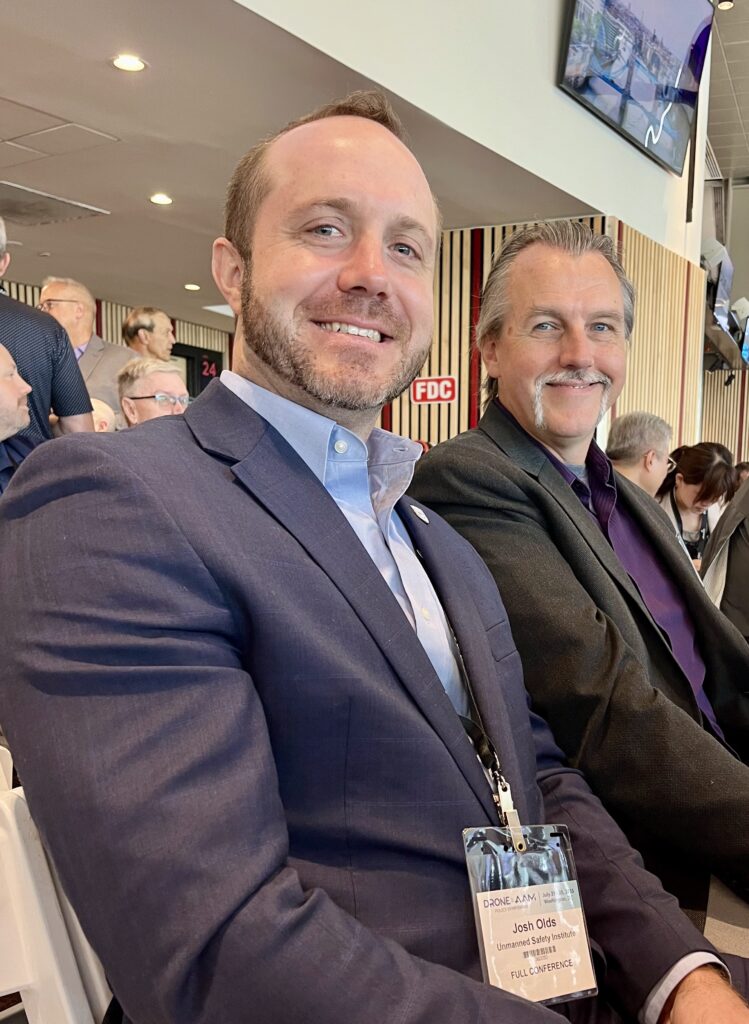By: Juan Plaza, AG Safety Ambassador
On August 5, 2025, the Federal Aviation Administration released its long-anticipated Notice of Proposed Rulemaking (NPRM) for Beyond Visual Line of Sight (BVLOS) drone operations—marking a key moment for the integration of Uncrewed Aircraft Systems (UAS) into the National Airspace System (NAS). Named Part 108, the draft rule establishes—for the first time—a clear, scalable pathway for routine BVLOS operations without the need for cumbersome waivers or exemptions. The NPRM is now open for a short but critical 60-day public comment period, offering industry stakeholders a rare opportunity to influence the next era of American airspace.
Central to this proposed regulatory framework is a shift in philosophy: Safety Management Systems (SMS) are no longer a best practice for some, but a mandatory cornerstone for all operators seeking to fly BVLOS for compensation or hire. This requirement reflects lessons from decades of aviation safety management and recognizes the unique risk landscape presented by uncrewed, remotely piloted aircraft operating far beyond the operator’s direct line of sight.
Introducing SMS: A Fundamental Shift in Aviation Safety
The emphasis on SMS in Part 108 is not arbitrary. Safety Management Systems have revolutionized traditional, crewed aviation since their introduction in the 1990s. The International Civil Aviation Organization (ICAO) formally adopted SMS principles in the early 2000s, shifting the focus from after-the-fact incident reaction to proactive risk identification and mitigation across global airlines, airports, and air traffic services. In the United States, SMS became mandatory for commercial airlines (Part 121) in 2015, setting new industry benchmarks for organizational safety culture.
Rather than relying on compliance with prescriptive rules or merely responding to accidents, SMS requires organizations to weave safety into every aspect of their operations. The philosophy is straightforward: create a culture where hazards are systematically identified, risks are analyzed, mitigations are documented, and feedback loops ensure constant improvement.
Why SMS Is Central to the FAA’s BVLOS Proposal
BVLOS operations represent a significant leap in both technological and operational complexity over traditional line-of-sight drone flights. In these missions, drones fly far beyond the visual contact of the human operator, at night and often over people, critical infrastructure, or other airspace users. This brave new world introduces new threats, from lost-link scenarios and emerging cyber risks to the intricate choreography of integrating crewed and uncrewed traffic in shared airspace.
The FAA’s Part 108 proposal mandates that BVLOS operators create, document, and continually update a robust SMS tailored to the scale and scope of their operations. This includes:
- Comprehensive Hazard Identification: Operators must systematically assess risks before, during, and after flight, ensuring that unique BVLOS hazards—like radio frequency interference or remote area contingencies—are addressed.
- Proactive Risk Management: Instead of waiting for accidents to drive safety improvements, operators are expected to anticipate and plan for a wide range of potential safety events.
- Detailed Recordkeeping and Reporting: Every incident, failure, or cyber breach must be meticulously recorded, fostering transparency and industry-wide learning.
- Rigorous Personnel Training: Human factors remain paramount. Supervisors, pilots, mechanics and coordinators must be thoroughly vetted, trained, and regularly updated on changing risk landscapes.
- Organizational Safety Culture: SMS is not a static manual on a shelf—it is a living system embedded in daily decision-making across all levels of the organization.
In short, the FAA is sending a clear message: scalable, routine BVLOS operations will only be safe and sustainable if risk management evolves from a checklist exercise to a deeply rooted, continuous process.
The Evolution and Impact of SMS in Aviation
The story of SMS in aviation is a story of culture change. In the early 1990s, as jet travel became nearly ubiquitous, the aviation industry recognized that focusing solely on incidents and compliance was no longer adequate. Influenced by other high-risk sectors such as nuclear energy and chemical manufacturing, international and national safety agencies began developing systemic approaches that made organizations—not regulators—the primary custodians of safety.

ICAO’s mandate that its member countries implement SMS was a paradigm shift, compelling airlines, airports, and air traffic control organizations to develop bespoke systems that fit their unique environments. Since then, SMS has contributed to making commercial aviation the safest form of transportation.
In the U.S., this journey culminated when the FAA required SMS integration into major airline and maintenance operations under Part 121. The outcome was transformative—a sharp reduction in serious incidents, earlier detection of systemic problems, and a new focus on safety culture as a competitive advantage.
Bringing SMS to Uncrewed Systems: Unique Challenges and Opportunities
Transitioning SMS from crewed to uncrewed aviation is not a copy-paste job. Drones have no cockpit crew to rely on in an emergency and face technological risks that do not exist for manned aircraft—such as remote command loss, data link vulnerabilities, and dependencies on automated detect-and-avoid systems.
Many traditional aviation risks (like runway incursions or onboard fires) are less relevant, but unique UAS issues—such as spectrum interference, remote pilot decision latency, and population overflight—take center stage. Part 108 recognizes these differences by making the SMS requirements adaptable but rigorous. Operators are expected to tailor their safety programs, leveraging automation and data analytics to fit the scope of their BVLOS undertakings.
UAS industry groups—such as the Unmanned Safety Institute (USI) and peer organizations in the NBAA’s Emerging Technologies Committee—are already developing ready-to-adopt frameworks and best practice resources for operators seeking to meet or exceed FAA requirements.
In an exclusive interview for Autonomy Global, immediately following the announcement of the NPRM, Josh Olds, CEO of USI said:
“By distilling the basic elements of traditional SMS and adapting them to the realities of the uncrewed aviation mission being conducted, we are able to create an SMS that is the right size and complexity for the mission. Companies entering this industry will benefit from creating a culture of safety where there are clear roles defining who’s responsible for safety and who is responsible for funding safety programs as it will translate to sustainable and repeatable operations. Part 108 will encourage companies to adopt SMS to create awareness of their safety culture and to facilitate operations in complex airspace.”

The Structure of SMS Under Part 108
To comply with Part 108, a BVLOS operator’s SMS should address four essential components:
- Safety Policy: Documented commitment, signed by top management, establishing safety as a core value.
- Safety Risk Management: Processes to identify, assess, and control hazards—both technical and human.
- Safety Assurance: Mechanisms for measuring effectiveness (e.g., audits, investigations, performance data review) and making iterative improvements.
- Safety Promotion: Ongoing safety communication, education, and culture-building at every organizational level.
These building blocks—when tailored to the unique features of uncrewed aviation—will form the foundation for FAA recognition and operational authorization.
Integration with the National Airspace: Why Proactive Safety Is Non-Negotiable
At the heart of the FAA’s Part 108 proposal is the expectation that BVLOS operations will become part of the everyday tapestry of American airspace—not limited to isolated areas. This means regular interaction with populated areas, traditional crewed aviation, public spaces, and critical infrastructure.
Proactive SMS is a necessity, not a luxury, when integrating with the NAS. It ensures UAS operators do not just meet minimum legal standards, but anticipate risks, protect the public, and build trust with regulators and stakeholders.
The Path Forward: Industry Action and Comment Opportunity
The opening of the NPRM comment period marks a unique inflection point for the UAS industry. Operators, manufacturers, service providers, and advocacy groups have 60 days to analyze the FAA’s proposal, provide feedback, and shape the direction of BVLOS rules for years to come.
Organizations seeking to operate in this new regulatory environment should begin preparing now by:
- Assessing and Enhancing Their Own SMS: Whether you are a major delivery network or a small inspection firm, a robust SMS will be essential—not just for compliance, but for competitive differentiation and risk management.
- Engaging with Industry Groups: Collaborate to develop standards, share lessons learned, and advance the cause of safe, sustainable UAS integration.
- Embracing Transparency and Continuous Improvement: Treat SMS as a living system, updating policies and procedures in response to new data or operational realities.
The Historical Takeaway: SMS as the Bridge to Full NAS Integration
For over 30 years, SMS has underpinned an enviable safety record in Part 121 and Part 135 crewed aviation. Now, as commercial and industrial interest in uncrewed operations soars, it is time to bring the same mindset and rigor to drones.
By embedding SMS in the DNA of their organizations, UAS operators will earn the trust of both regulators and the public—and help ensure a future where piloted and unpiloted aircraft share the sky safely and efficiently.
As the NPRM is reviewed and shaped by industry feedback, one thing is clear: SMS is not just a regulatory hurdle, but the indispensable key to sustainable, routine, and truly integrated UAS operations across America’s airspace.

